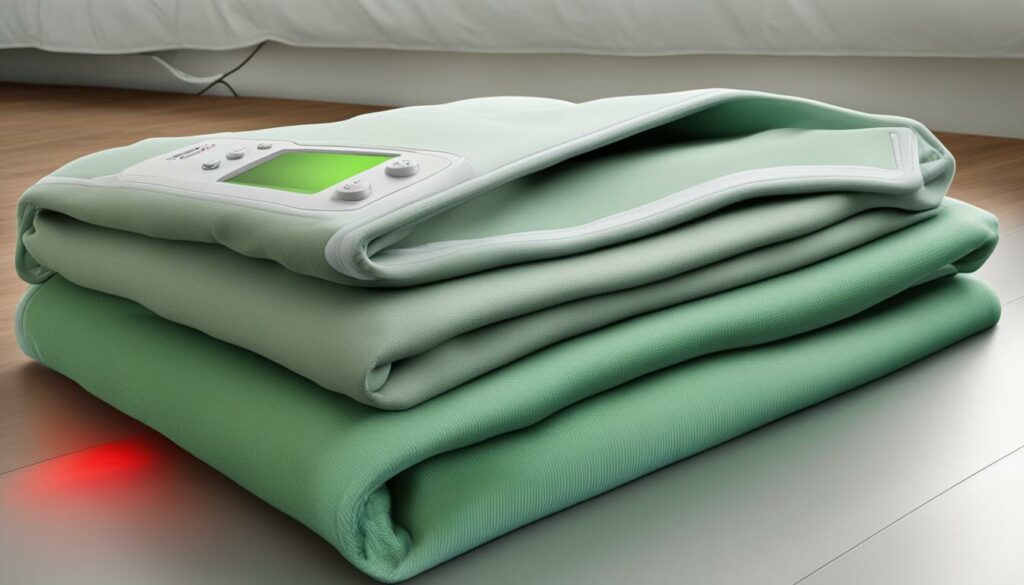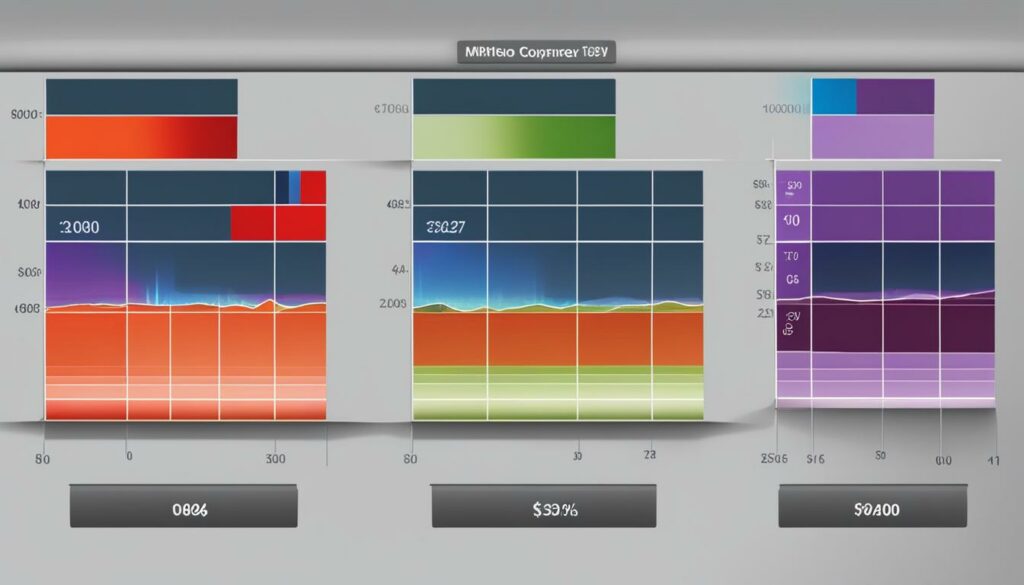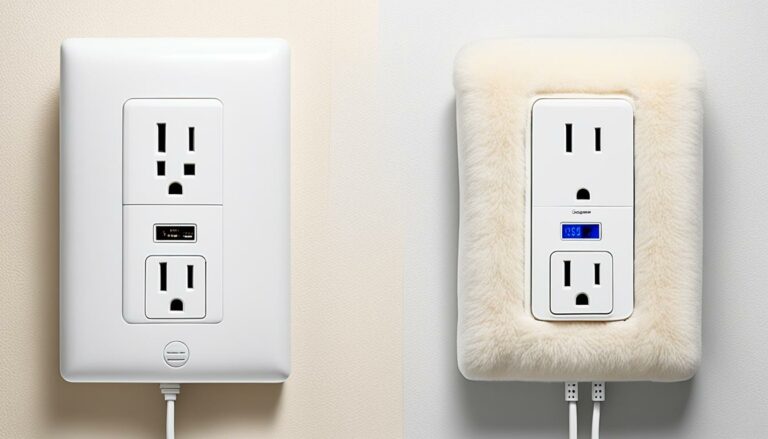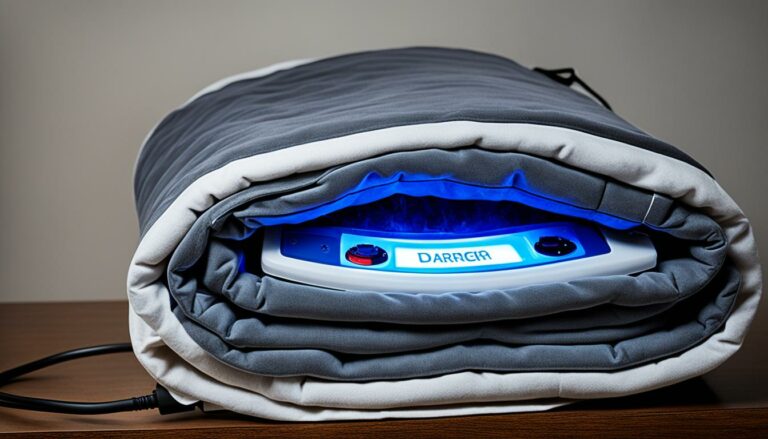Electric Blanket Energy Use Explained – Find Out!
Eric Christie stands as a luminary in the bedding industry, with a career spanning nearly four decades since the early 1980s. His journey through the world of bedding has seen him wear many hats – a manufacturer, designer, and retailer, showcasing his versatility and expertise in Read more...
pillowsandbedsheets.com and its partners may earn a commission if you purchase a product through one of our links
Are you curious about the energy consumption of electric blankets? If you’ve ever wondered how much power these cozy blankets use or want to calculate their operating costs, you’ve come to the right place! In this article, we’ll explain the basics of electric blanket energy use and provide helpful insights to help you make informed decisions.
Key Takeaways:
- Electric blankets utilize internal wiring to generate heat and provide warmth.
- The wattage rating of an electric blanket indicates its power consumption and can range between 100 to 300 watts.
- Understanding volts and amps is essential for safe usage and preventing electrical hazards.
- Recommended wattage levels depend on factors such as blanket size, materials, insulation, and personal preferences.
- Calculating the operating costs of an electric blanket can be done by multiplying the wattage by the hours of use and multiplying it by the electricity rate.
Now, let’s dive into the specifics and gain a comprehensive understanding of electric blanket energy use!
How Does an Electric Blanket Work?
Electric blankets work by utilizing internal wiring to generate heat through the flow of electrical current. The wires are evenly distributed across the surface of the blanket, ensuring consistent warmth. When the blanket is powered on, the electrical current running through the wiring causes the wires to warm up. This generated heat is then transferred to anyone underneath the blanket, providing a cozy and comfortable environment.
Electric blankets offer the convenience of adjustable heat settings, allowing users to customize their level of warmth. Most models come with controls that enable users to increase or decrease the heat intensity to their preference. This targeted warmth is beneficial, especially during colder seasons, as it can help reduce home heating costs by allowing you to focus on heating specific areas rather than the entire room.
Electric blankets provide a consistent source of warmth by utilizing internal wiring to produce heat. They offer adjustable heat settings and help to reduce home heating costs by providing targeted warmth.
One of the advantages of electric blankets is their ability to preheat beds before sleep. By turning on the electric blanket a few minutes before getting into bed, you can enjoy a warm and cozy sleeping surface, especially during colder nights. This preheating feature helps create a more comfortable sleeping environment and eliminates the need to rely solely on room heating systems.
Now that you understand how an electric blanket works, let’s explore the power terminology associated with these blankets in the next section.
Image related to how an electric blanket works:
Understanding Power Terminology – Watts, Volts, and Amps
Power terminology plays a crucial role in understanding the energy consumption and electrical characteristics of electric blankets. By familiarizing yourself with power terminology such as watts, volts, and amps, you can make informed decisions when selecting and using an electric blanket.
Watts:
Watts measure the amount of electricity a device draws from the power source to generate heat. In the context of electric blankets, the wattage rating indicates the power consumption or rate of energy use. Most household electric blankets have wattage ratings ranging from 100 to 300 watts. Higher-end blankets designed for exceptional warmth may use 400 watts or more. When choosing an electric blanket, considering the wattage is crucial to ensure it meets your heating needs and aligns with your energy usage preferences.
Volts:
Volts measure the electrical “pressure” or force that pushes electrons through a circuit. It indicates the voltage, which is the standard household electrical “pressure” in North America – 120 volts. Electric blankets are designed to operate within this voltage range. It is essential not to exceed the specified voltage rating for the electric blanket to prevent electrical hazards and fire risks.
Amps:
Amps measure the rate of electron movement through a conductor and are measured in amperes (A). Household electric blankets typically have amp ratings ranging from 1A to 2A. Exceeding the specified amp rating can lead to overheating and potential dangers. It is crucial to ensure the electric blanket’s amp rating aligns with your home’s electrical system to maintain safety and optimal performance.

Understanding power terminology empowers you to make informed decisions about the wattage, voltage, and amp requirements of an electric blanket. By ensuring these specifications align with your household electrical system, you can enjoy a safe, efficient, and cozy experience with your electric blanket.
Recommended Wattage Levels for Electric Blankets
When choosing an electric blanket, it’s important to consider the recommended wattage levels based on factors such as blanket size, materials, insulation, and individual heating preferences. These guidelines can help you select the right wattage for your specific needs and ensure optimal warmth and comfort.
Wattage Guidelines for Different Bed Sizes:
| Bed Size | Low Power (W) | Medium Power (W) | High Power (W) |
|---|---|---|---|
| Twin/Single | 100 | 150-200 | 250+ |
| Full/Double | 150 | 200-250 | 300+ |
| Queen/King | 200 | 250-300 | 350+ |
The recommended wattage levels may vary depending on factors such as room insulation and individual sensitivity to cold. It’s important to note that low to medium-power blankets usually provide sufficient warmth for most users. However, it’s always wise to consider your individual preferences for heating intensity when selecting the wattage level for your electric blanket.
By choosing the appropriate wattage level, you can ensure that your electric blanket provides the desired level of comfort and warmth without consuming excessive energy.

Electric blankets can be a cozy addition to your sleep routine, offering warmth and comfort during chilly nights. However, it’s important to understand the wattage levels that suit your needs to ensure optimal performance and energy efficiency. Keep these recommendations in mind when selecting an electric blanket for your bed.
Calculating the Operating Costs of an Electric Blanket
When it comes to using an electric blanket, it’s important to consider the associated operating costs. By understanding how to calculate these costs, you can make informed decisions about your energy consumption and budget. The operating cost of an electric blanket depends on two key factors: its wattage rating and the duration of use.
To calculate the daily energy consumption of your electric blanket, you need to multiply the wattage of the blanket by the hours of use and divide the result by 1000. Let’s consider an example: if you have a 150-watt electric blanket and you use it for 2 hours per day, the daily energy consumption would be 0.3 kilowatt-hours (kWh).
Electricity consumption (kWh) = (Wattage x Hours of use) / 1000
After determining the daily energy consumption, you can determine the daily cost by multiplying the energy consumption by your electricity rate per kWh. To calculate the monthly cost, you simply multiply the daily cost by the number of days you use the blanket in a month.
For example, using the same 150-watt electric blanket that consumes 0.3 kWh per day, if your electricity rate is $0.12 per kWh, the daily cost would be $0.036 (rounded to two decimal places). If you use the blanket for 30 days in a month, the monthly cost would be approximately $1.08.
Daily cost = Electricity consumption (kWh) x Electricity rate
Monthly cost = Daily cost x Number of days of use in a month
It’s worth noting that while operating costs of electric blankets can vary, there are options available to help minimize these costs. For off-grid use, you can consider utilizing an EcoFlow DELTA 2 Max portable power station, which allows you to operate your electric blanket without incurring additional electricity expenses.

Are Electric Blankets Worth the Money?
When it comes to staying warm during the cold winter months, electric blankets offer a cost-effective option, particularly in colder climates.
One of the key benefits of electric blankets is their energy-saving potential. By pre-warming your bed with an electric blanket, you can reduce the amount of time needed to use your main heating source. This translates to energy savings and ultimately lowers your heating costs.
Not only are electric blankets cost-effective, but they are also incredibly convenient. With the ability to be turned on and off as needed, electric blankets provide targeted warmth without the need to heat the entire room. Say goodbye to wasting energy on unused spaces!
Although electric blankets may have a higher upfront cost, their long-term savings in heating costs, combined with their convenience and low maintenance, make them a worthwhile investment. Remember, the overall effectiveness and cost-efficiency of an electric blanket may vary depending on your individual needs and usage patterns.
FAQ
How does an electric blanket work?
Electric blankets work by using internal wiring to carry an electrical current that produces heat. The wires are evenly distributed across the surface of the blanket, and when powered on, the current flowing through the wiring causes the wires to warm up. This heat is then transferred to anyone underneath the blanket, providing warmth and comfort.
What is the power terminology associated with electric blankets?
Power terminology associated with electric blankets includes watts, volts, and amps. Watts measure how much electricity the blanket draws from the power source to generate heat. Volts measure the electrical “pressure” or force that pushes electrons through a circuit, and amps measure the rate of electron movement through a conductor. It is important to consider these values when using an electric blanket to prevent electrical hazards and ensure safe operation.
What are the recommended wattage levels for electric blankets?
The recommended wattage levels for electric blankets depend on factors such as blanket size, materials, insulation, and individual heating preferences. Generally, for twin/single size beds, low power is around 100W, medium power is 150-200W, and high power is 250+W. For full/double size beds, low power is around 150W, medium power is 200-250W, and high power is 300+W. For queen/king size beds, low power is around 200W, medium power is 250-300W, and high power is 350+W. These wattage levels may vary based on room insulation and personal sensitivity to cold.
How can I calculate the operating costs of an electric blanket?
To calculate the operating costs of an electric blanket, you need to multiply the wattage of the blanket by the hours of use and divide by 1000 to obtain the daily energy consumption in kilowatt-hours (kWh). Multiply this value by the electricity rate per kWh to determine the daily cost. To calculate the monthly cost, multiply the daily cost by the number of days of use in a month. This calculation will give you an estimate of how much it would cost to use your electric blanket.
Are electric blankets worth the money?
Electric blankets can be a cost-effective heating option, especially in colder climates. By pre-warming the bed, they can reduce the amount of time needed to use the main heating source, resulting in energy savings. Electric blankets are convenient as they can be turned on and off as needed, providing warmth without heating the entire room. While they may have a higher upfront cost, their energy-saving benefits and low maintenance make them a worthwhile investment in the long run. However, the cost and efficiency of electric blankets can vary depending on individual needs and usage patterns.
Eric Christie stands as a luminary in the bedding industry, with a career spanning nearly four decades since the early 1980s. His journey through the world of bedding has seen him wear many hats – a manufacturer, designer, and retailer, showcasing his versatility and expertise in Read more...







